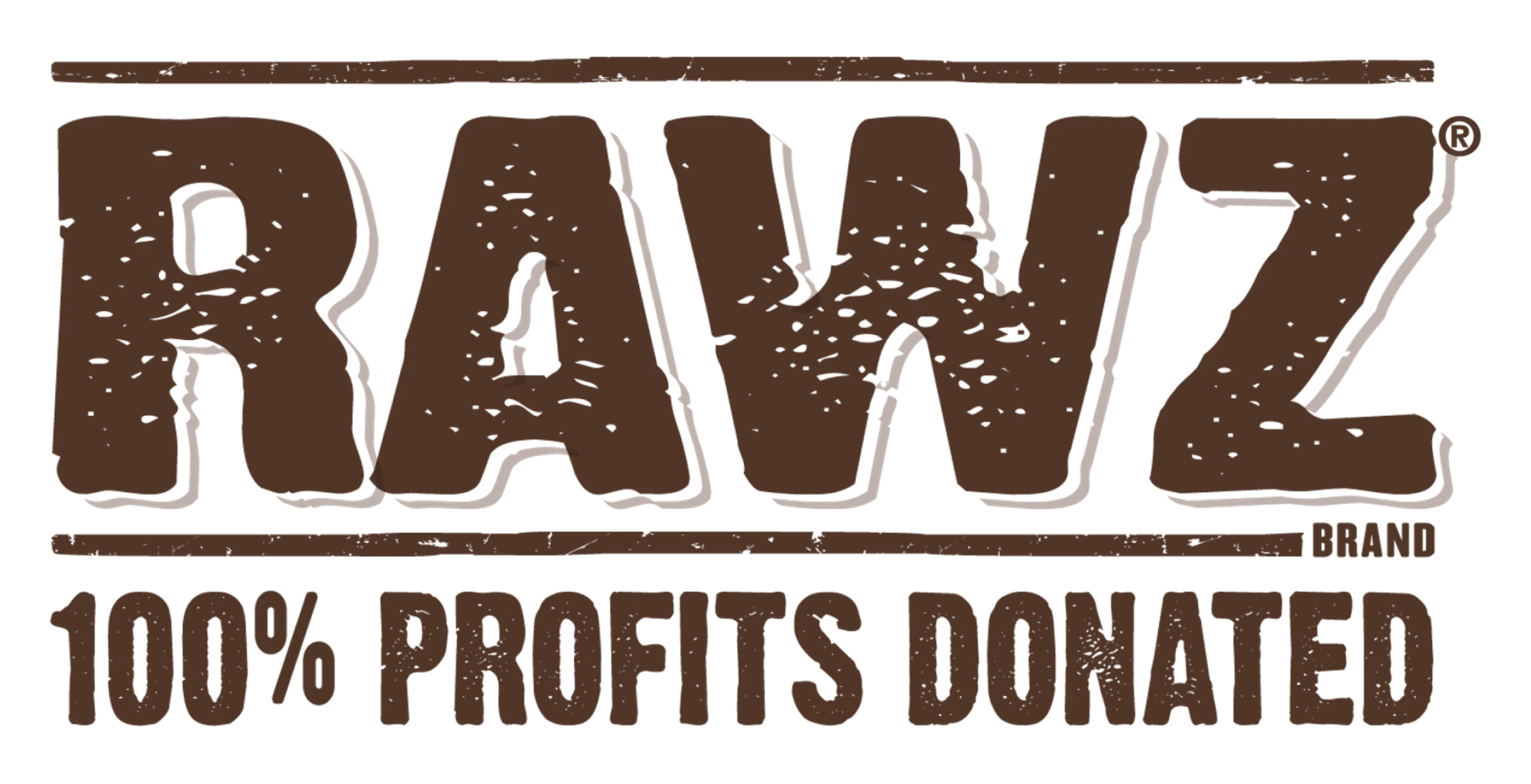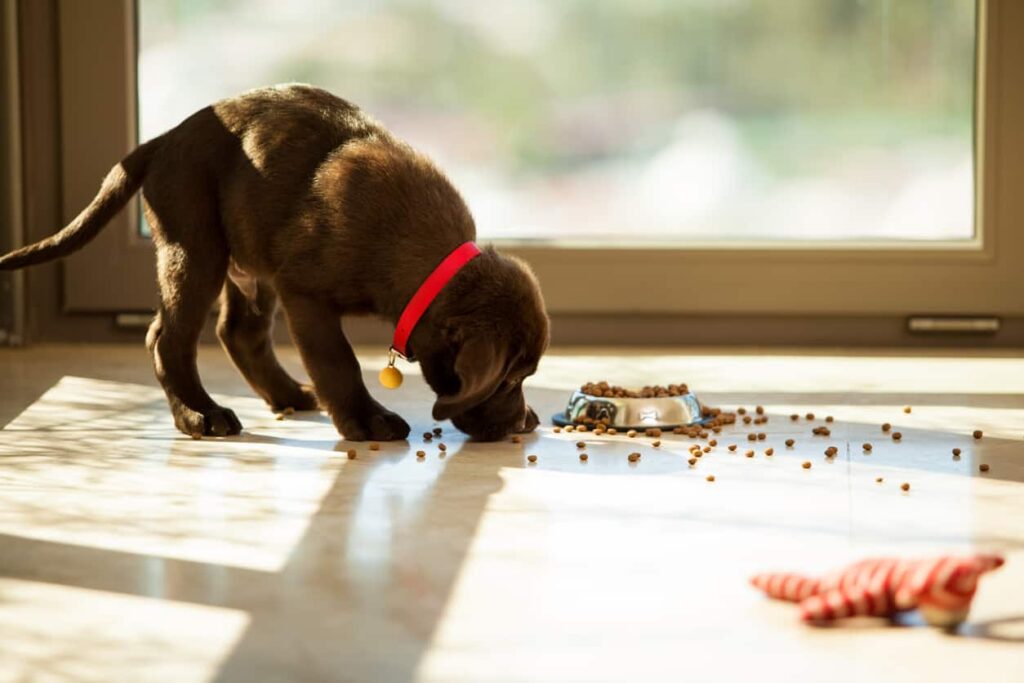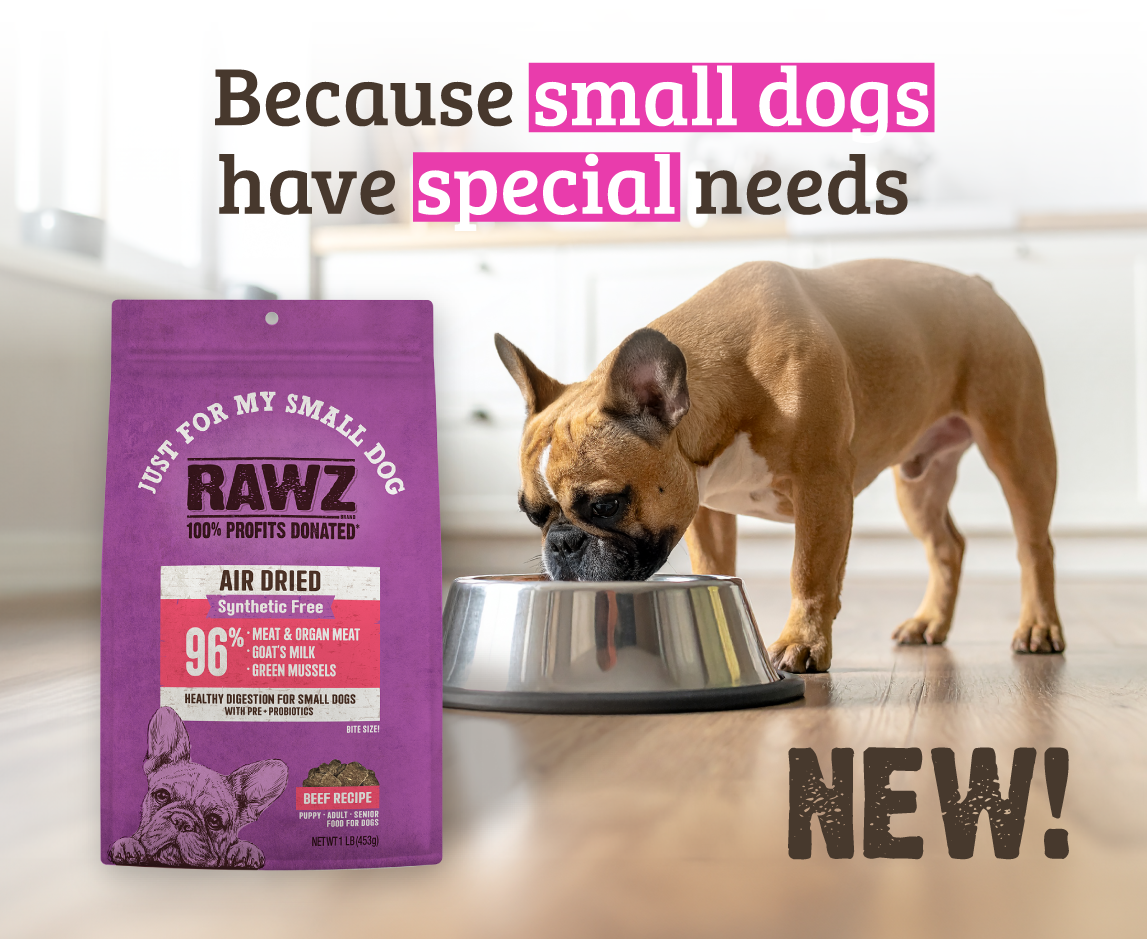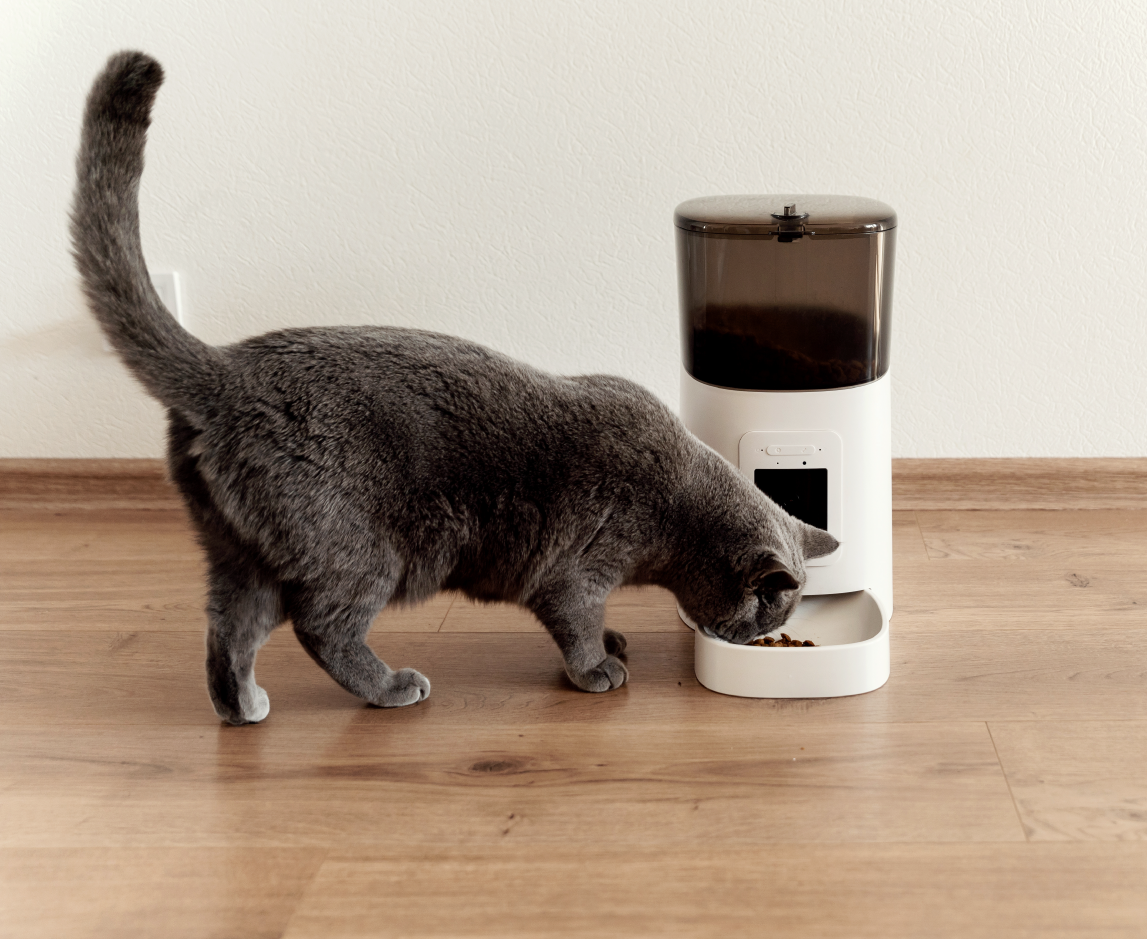Some of the most common questions new dog parents have are about diet — specifically when and how to transition a young dog from food formulated for puppies to an adult dog food. This post explains the transition from puppy to adult dog food and will help set your dog on a path to a long and healthy life!
How Long Should a Puppy Eat Puppy Food?
Whether a puppy is from a breeder, shelter or foster parent, new dog parents should receive their puppy’s current food or feeding instructions to aid in a smooth transition to their new home. A puppy’s nutritional needs will change as they age, particularly when the growing process is complete. This is when they can transition to adult food. Breeds reach physical maturity at different times. A general rule of thumb is that smaller breeds often reach their adult size within their first year, whereas larger breeds, such as Great Danes, can still be growing through their second year of life. Your veterinarian can help determine when to begin the transition.
What Makes Puppy Food Different from Adult Dog Food?
The Association of American Feed Control Officials (AAFCO) has standards and guidelines to differentiate the nutritional needs of adult dogs from those of puppies. Puppies need more nutrients and calories than adult dogs to support their growth. After the growth stage of development ends, the dog enters the adult maintenance stage, and their nutritional requirements change. See the chart below for the nutritional differences for minimum amounts required between adult dog and puppy food to be nutritionally complete and balanced. Note that these aren’t the optimal amounts, but the minimum for a food to be considered complete and balanced for a given life stage.
| Nutrient | Minimum amount required for puppy food | Minimum amount required for adult dog food |
| Protein | 22% | 18% |
| Fat | 8% | 5% |
| Calcium | 1% | 0.6% |
| Phosphorus |
0.8% | 0.5% |
| Sodium | 0.3% | 0.06% |
This chart was compiled using data from Dog Food Insider.
All Life Stages Food
There are many dog foods that fit the AAFCO’s standard for All Life Stages and are safe for both puppies and adult dogs, even large breeds. This is especially convenient in multi-dog households that don’t want to purchase multiple types of dog food. Puppy and adult dog size servings will differ, so owners should be sure to follow the food’s feeding guidelines. All of RAWZ’s meal-free dog food are substantiated to meet the AAFCO standards for All Life Stages including the growth of large breed dogs (70lbs or more as an adult).
Puppies and People Food
It’s not recommended to give in to “puppy eyes” and give them table scraps. Not all foods are dog-friendly or have nutritional significance for dogs. That doesn’t mean that dogs can’t eat any human food. In fact, there is a raw food diet for dogs that consists of fresh meat and bones, produce, grains, dairy and supplements.
Fruits and veggies can be given to your pup as a treat daily or a few times a week but shouldn’t account for more than 10% of their total diet. Common fruits and veggies that dogs can eat include but aren’t limited to bell peppers, broccoli, carrots, green beans, apples, bananas, berries, oranges, mango and peaches. Harmful foods to dogs include but aren’t limited to cherries, grapes, raisins, onions and artificial sweeteners.
Why Can't You Feed an Adult Dog Puppy Food?
Although puppy food is not toxic to adult dogs, it doesn’t have the nutritional profile they need to sustain a healthy lifestyle. The main concern with feeding puppy food to adult dogs is the increased amount of fat, protein and calories. This can lead to obesity and a heightened risk of diabetes and other weight-related ailments. Also a concern, primarily in larger breeds, is that the higher levels of fat and imbalanced calcium and phosphorous levels can increase chances of growth disorder issues like hip dysplasia and excessive cartilage growth
Related Reading: How Much Should You Feed Your Dog? Canine BCS Chart & More
How to Transition Your Puppy to Adult Dog Food
Any time a dog’s food is changed, the transition should be gradual. To make the transition as smooth and problem-free as possible, we recommend a 5-7 day transition period. The transition from puppy to adult dog food can potentially cause some gastrointestinal distress, particularly if the macro nutritional breakdown of the diet changes. For example, if there is a more than 2% increase in the fat or protein amount in the adult dog food, this can result in a dog having an upset stomach.
It is important to pay attention to your pet’s behavior and look for signs of GI discomfort, like vomiting or wet stool. These are signs you may need to make a slower transition or revisit the type of adult dog food you’re feeding. A veterinarian can make suggestions to help a smooth transition
Related Reading: Common Dog Stomach Issues And Digestive Problems
See this RAWZ transition chart as an example:
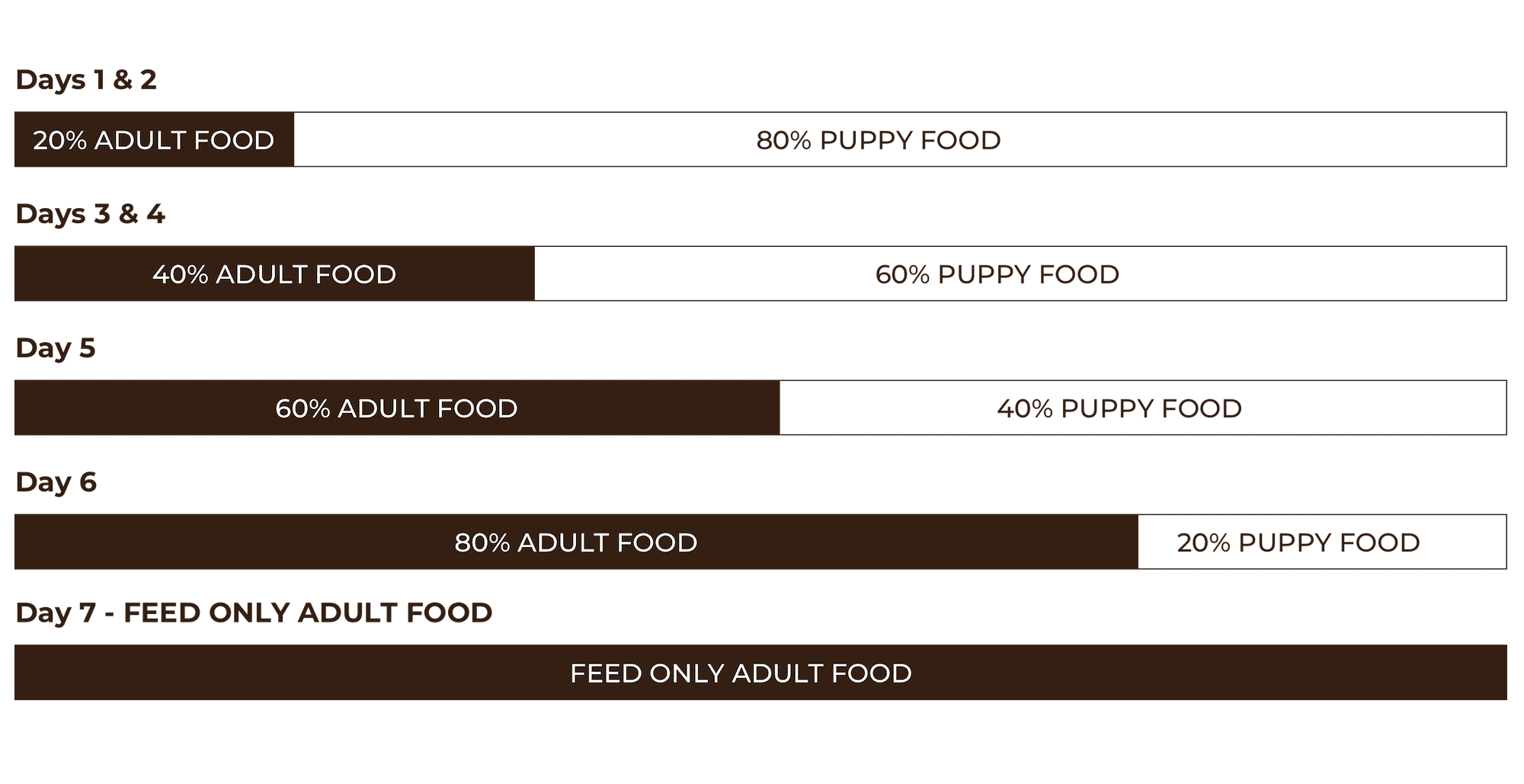
Quality and Quantity
When transitioning to a diet formulated for an adult dog (maintenance stage), it becomes increasingly important to provide more protein. This will allow for better muscle tissue repair while minimizing the amount of protein that must be processed as waste by your pet. For adult dogs, the more efficient the protein the better your dog’s overall health.
Not all proteins are created equal. Protein Efficiency Ratio (P.E.R.) measures the nutritional value of protein sources. The higher the P.E.R. value of a protein, the more beneficial it is to the animal.
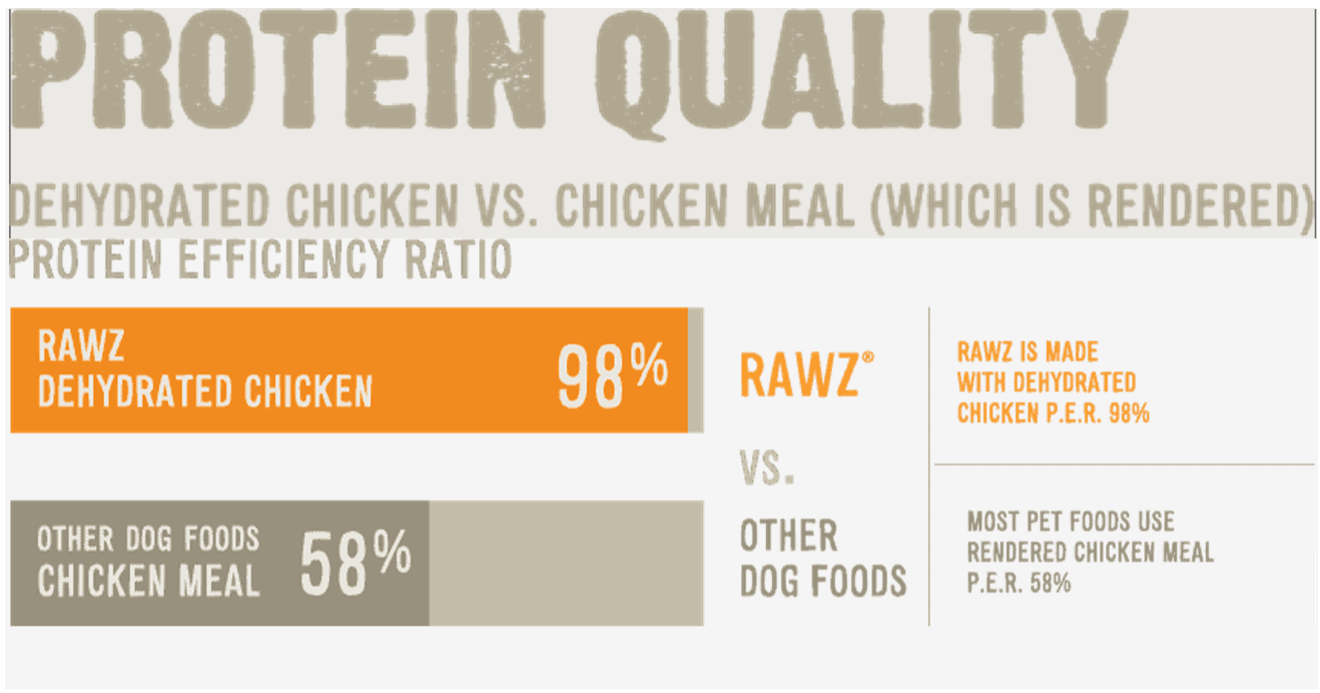
Related Reading: The Best Dog Foods For Sensitive Stomachs [With FAQS]
FAQs About Switching Your Puppy to Adult Dog Food
Does it matter if my dog has been spayed or neutered yet?
There isn’t a hard rule on whether to transition to a diet formulated for the adult maintenance stage before or after you’ve spayed or neutered a dog. Not all dogs are spayed or neutered at the same age. Just as with physical development, sexual maturity tends to occur later in larger breeds, possibly delaying the need for food transition for our larger canine companions. Another factor to consider is that a dog’s appetite may change following a spay or neuter procedure, which can throw an added variable in the mix and make monitoring the effects of a diet transition difficult.
Does the size of each piece of food vary between puppy and adult diets?
Like a child’s teeth, puppies have less-developed dental systems. This, combined with their enthusiasm for mealtime, means that food with smaller pieces is better. Smaller pieces are easier to break down and digest.
Breed size is an important factor in a dog’s ability to properly chew food. For larger dogs, choking on too-small pieces is a concern. The opposite is true for small breeds, who can choke on pieces of food that are too large. Observe your dog as they transition to new size or shape of kibble to see how they are handling their new food.
